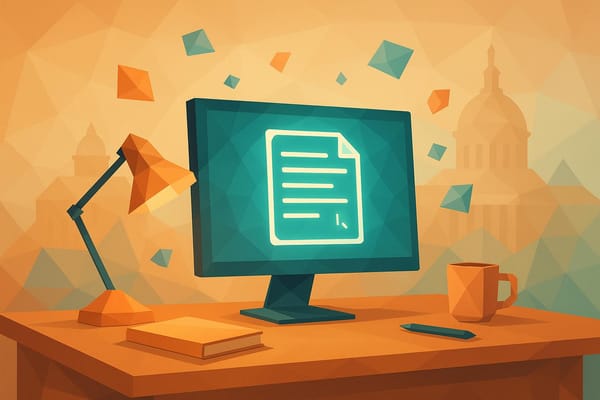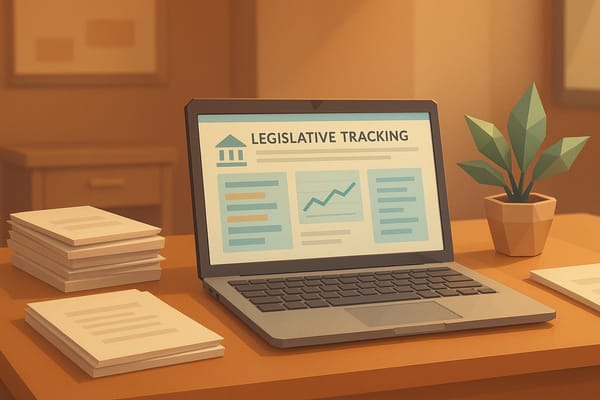New Bill Proposes Cell Phone Restrictions

The introduction of House Bill 81 marks a significant shift in how public K-12 education will manage the presence of electronic communication devices, particularly cell phones, in classrooms. As technology continues to play an integral role in students' lives, educational authorities face the challenge of balancing accessibility with the need for focused learning environments. This upcoming legislation will require local boards of education to adopt specific policies aimed at curbing disruptions caused by unchecked phone usage.
In this blog, we will delve into HB81’s key elements, including the rationale behind its introduction, the proposed model policy and its implications for local education boards, the expected enforcement mechanisms, and the potential consequences for students. Additionally, we will explore the need for exceptions within the policy while raising awareness about the long-term impact of this legislative shift.
The Rationale Behind HB81
The primary concern driving the introduction of House Bill 81 is the ubiquitous presence of cell phones in classrooms, which has raised questions about student attentiveness and overall learning outcomes. Proponents argue that distractions from devices hinder critical educational engagement. By establishing a model policy, the bill aims to set a standard across the state that would enhance the learning environment for all students.
Key Provisions of the Bill
House Bill 81 mandates that the State Board of Education develop a clear model policy regarding electronic communication devices. This policy will strictly restrict possession and use during classroom instructional time. Specifically, students may be allowed to use cell phones only under certain conditions, such as emergencies or authorized educational activities. Notably, the model policy also acknowledges that integration of technology is essential for modern education, hence the exceptions outline specific scenarios where device use is permitted, promoting responsible usage.
Discipline Measures Included
To enforce compliance with the new regulations, HB81 sets forth a discipline scale incorporating escalating penalties for repeat violators. Notably, the framework includes fines, warnings, and potential confiscation of devices for ongoing infractions. This structured discipline approach seeks to encourage students to respect classroom rules while understanding the seriousness of repeated violations. The inclusion of fines represents a significant step in addressing these issues while also facilitating meaningful discussions about personal responsibility.
Local Board Requirements
The legislation requires that by the beginning of the 2026-2027 school year, every local board of education must adopt a policy reflecting the model policy established by the State Board. This move aims to create uniformity across all school districts, ensuring that students experience similar standards, regardless of their locality. Schools will thus have a standardized method for storing electronic devices during instructional time, fostering a communal understanding of device usage.
Understanding the Exceptions
HB81 recognizes that not all scenarios demand stringent restrictions on device usage. For example, students may be permitted to use their devices during medical emergencies or to manage their healthcare needs. Additionally, educational purposes sanctioned by teachers are acknowledged, allowing for an integrated approach to learning where technology serves as a tool rather than a distraction. This duality reflects an understanding of the evolving role of technology in education, aligning rules with pedagogical trends.
Anticipated Challenges
While House Bill 81 aims to enhance focus in classrooms, its implementation may face various challenges. Concerns surrounding enforcement, equity in device usage, and student privacy arise as essential points for discussion. Ensuring that all students have equal access to learning materials without discrimination against those with varying socio-economic backgrounds is imperative. Moreover, clarity on how the disciplinary measures will be documented and communicated to students and parents is crucial to the success of the bill.
Looking Towards the Future
As we anticipate the bill’s changes coming into effect on June 1, 2025, stakeholders in education, including teachers, parents, and students, will need to adapt to this new framework. It is crucial that open dialogues continue within school communities about device usage and the impact of these rules on educational outcomes. Establishing clear communication and understanding will ease transitions and foster cooperative environments conducive to learning.
Conclusion:
House Bill 81 highlights the growing trend towards stricter management of technology in educational settings. By aligning policies with teaching practices, the proposed bill has the potential to reshape how students interact with their electronic devices. As further adaptations are made within the educational landscape, it is essential to uphold student engagement, foster an atmosphere of respect, and encourage responsible device usage. Ultimately, this initiative can lead to more focused learning experiences, preparing students for a technology-rich future while maintaining their educational priorities.




